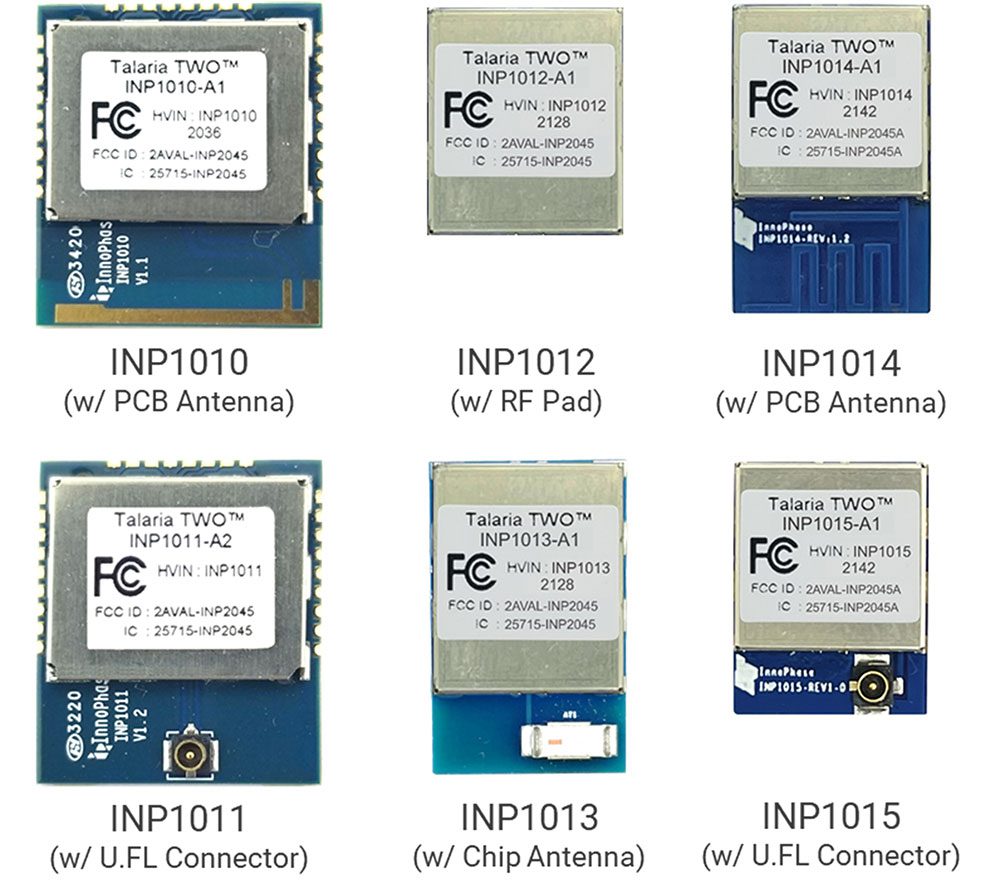Connectivity Innovation Boosts Battery Performance
Our on-the-go society demands wireless connectivity and more power than ever. New technology brings the freedom of battery power to more devices while extending battery life.

The proliferation of connectivity has led to increased demand for battery-powered devices that are connected without having to be plugged in. Batteries allow devices to be portable or to be installed in places with no other access to power. Wireless connectivity calls for powering devices continuously or over long periods of time, which presents certain challenges. Wi-Fi requires a lot of power, which means batteries must be replaced frequently. BLE (Bluetooth Low Energy) extends battery life but lacks the performance capabilities of Wi-Fi.
One solution comes in the form of an ultra-low power system-on-a-chip (SoC) multi-protocol platform. The InnoPhase IoT Talaria TWO SoC is a unique low-power solution that combines the performance of Wi-Fi with the advantages of BLE. “Our technology is unique. We are two to four times lower in power than our competitors,” said Deepal Mehta, senior director, business development at InnoPhase IoT. Talaria TWO is available as a chip and as wireless modules that contain the chip plus the RF components around it.
“In terms of wireless connectivity, we decided to focus on Wi-Fi. The obvious reason is that it is a huge market. Laptops and cell phones have it, and now we see it in smart home and many mobile IP-based devices. About 50% of IoT devices will be IP-based by 2027,” said Mehta. He explained that Wi-Fi is the base layer for the wireless technology in the TCP/IP (transmission control protocol/internet protocol) stack.
This technology meets the specific needs of the wireless IoT market. The ultra-low power (ULP) Wi-Fi at BLE power levels it serves is always on, always connected, and high bandwidth audio and video use cases exist with year-long battery life and smaller battery size. Direct-to-cloud connectivity is achieved with ubiquitous Wi-Fi connectivity for home, commercial building, and industrial markets. The multi-protocol wireless solutions feature integrated Wi-Fi, BLE, and Thread for new applications. No intermediate gateway is required for IoT applications.

The InnoPhase IoT Talaria TWO SoC is a highly integrated, single-chip wireless solution for a wide range of low-power IoT designs. It combines RF, baseband, PHY and MAC functionality to support IEEE 802.11 b/g/n and Bluetooth Low Energy (BLE 5.0) standards. Talaria TWO evaluation kits and modules are available from Mouser Electronics.
InnoPhase IoT specifically set out to address the issue of Wi-Fi power consumption by providing a very low power solution. “Through our unique RF technology, we can lower the power and do system level power management that results in as much as two to four times the battery life,” he said. “Firmware over the air (FOTA) updates are possible with Wi-Fi and provisioning of Wi-Fi can be done with integrated BLE wirelessly through a smartphone app. A lot of features help with ease of use, ease of deployment, and operation.”
Even as devices get smaller, the demand for more features continues to rise. Talaria TWO chips and modules allow for the addition of more capabilities. They also make it possible to incorporate wireless connectivity in devices that couldn’t previously function efficiently on battery power. Multiple markets benefit from the expanded capabilities and longer battery life.
Smart Home. Video cameras, doorbells, door locks, garage door openers, appliances, window blinds — any application where users benefit from infrequent battery replacement. Having a battery (versus needing to plug into an outlet) also gives the user more flexibility to place and manage the device.
Industrial IoT. Equipment for machine monitoring of vibration, humidity, temperature, and pressure sensing, and predictive maintenance or anomaly detection. Smart sensing at the device edge and running some AI algorithms are also possible with the MCU.
Asset tracking. This applies to industrial, medical (patient monitoring, health monitoring, and logging and sending patient data to the cloud), the enterprise construction industry, retail (traffic monitoring, inventory management), even pet tracking. All this can be done with a camera in a low power way that maximizes battery life and energy efficiency.
According to Mehta this technology will continue to develop. “The platform is also scalable, so not just for today’s function, but tomorrow there will be a Matter protocol that runs over TCP/IP for improved interoperability of smart home devices and higher performance for lossless audio for speakers, headphones, or cameras.”
Like this article? Check out our other Smart Homes and Innovation articles, our Special Topics Page, and our 2023 and 2022 Article Archives.
Subscribe to our weekly e-newsletters, follow us on LinkedIn, Twitter, and Facebook, and check out our eBook archives for more applicable, expert-informed connectivity content.
- Sealing Success: Overmolding for More Secure Connections - April 23, 2024
- Medical Cable Assemblies Product Roundup - April 23, 2024
- Mezzanine Connectors Product Roundup - April 16, 2024





